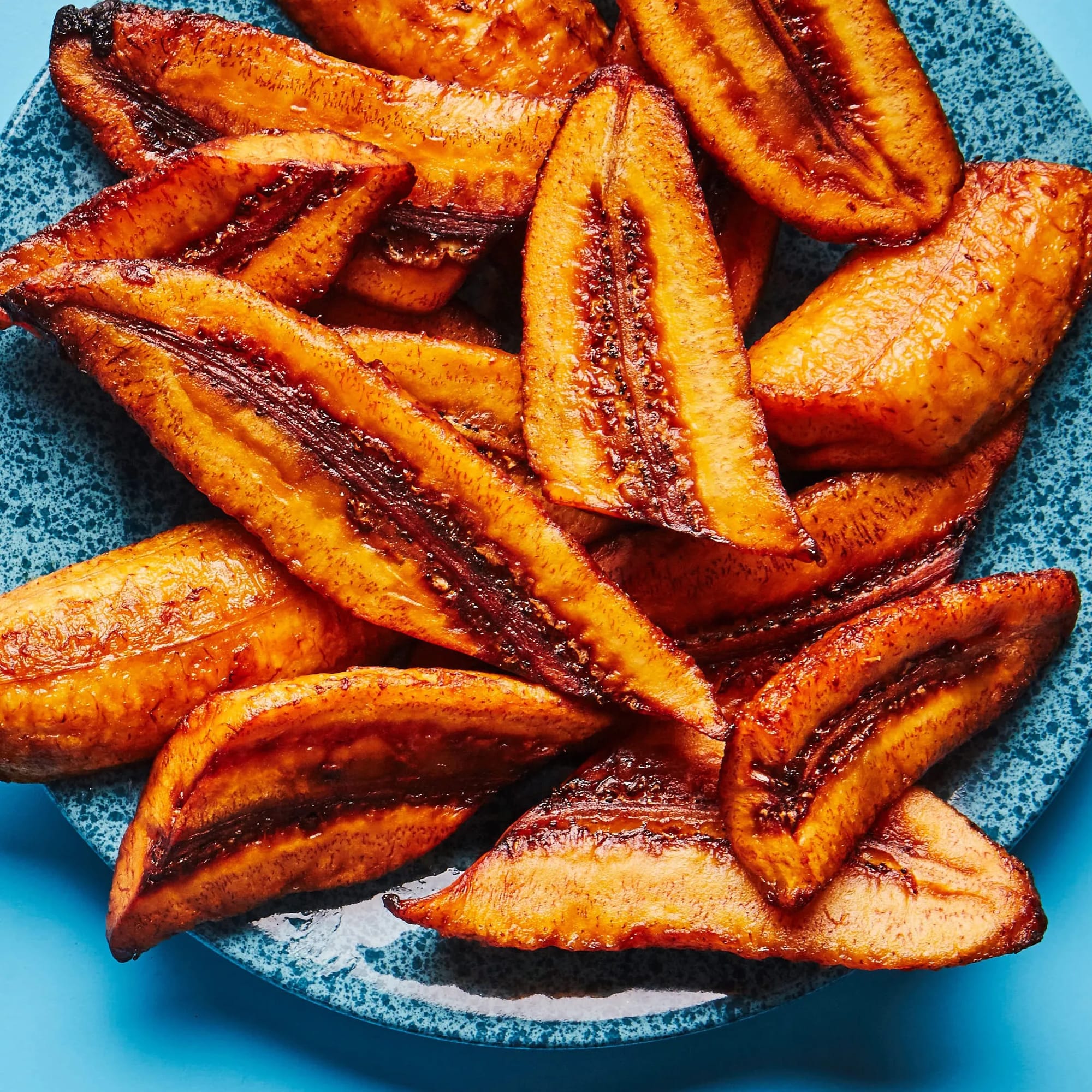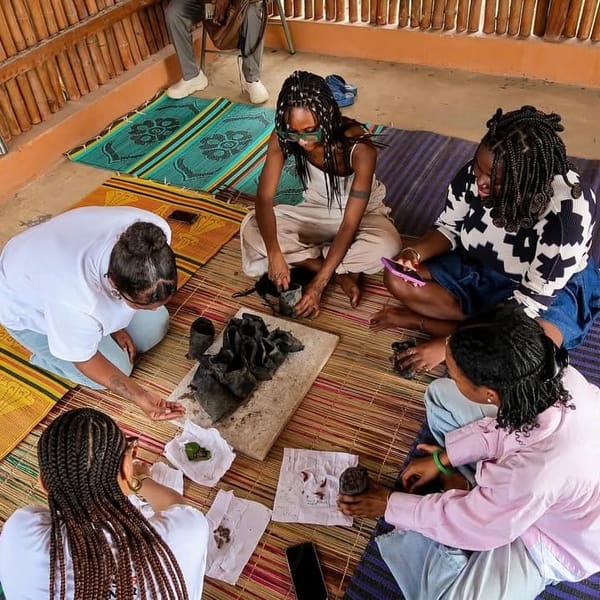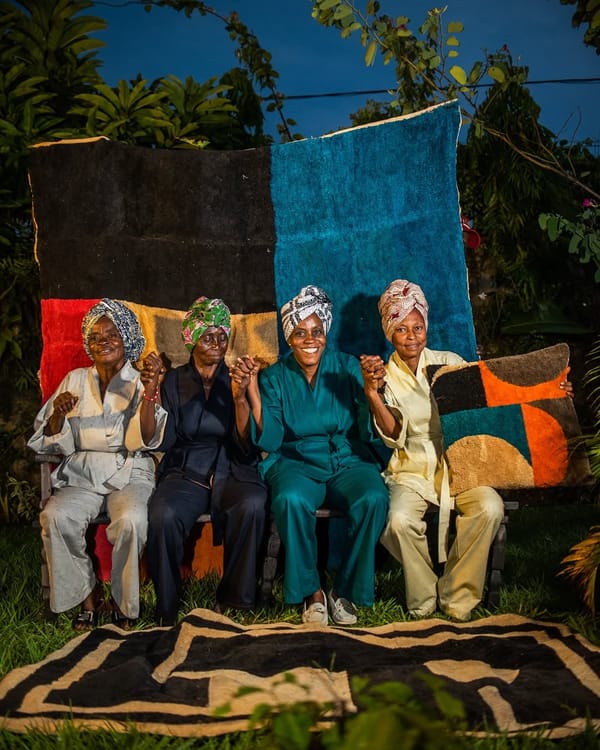If you think bananas are the only fruit worth peeling, it’s time to get acquainted with their African cousin, the plantain. This sturdy, versatile fruit has been a staple across Africa for centuries and it’s gaining fans worldwide thanks to its endless culinary possibilities and deep cultural roots.
So, What’s a Plantain Anyway?
Imagine a banana, but one that’s been hitting the gym and prefers savoury over sweet. That’s a plantain. While bananas are the go-to for a quick snack or smoothie, plantains are the backbone of many African dishes. They’re firm, starchy, and—unlike bananas—usually cooked before eating.
In Africa, plantains aren’t just food; they’re culture. They’re that dish your grandmother makes that smells like home, the snack you grab from a street vendor after a long day, or the side dish at every family gathering. They’ve got carbs, fibre and vitamins to keep you going, but they’re also packed with memories and tradition.

The Stages of Plantain: Green, Yellow, or Black?
Like life, plantains change over time and each stage has its own role in the kitchen.
- Green Plantains: When plantains are green, they’re tough and starchy, perfect for savoury dishes. In Nigeria and Ghana, they’re sliced and fried into chips or made into dodo—a fried plantain dish that’s crispy on the outside and tender on the inside. Green plantains are also the key ingredient in matoke, a beloved dish in Uganda where they’re steamed and mashed into a savoury, comforting side.
- Yellow Plantains: As plantains ripen, they turn yellow and their starch begins to sweeten. These are great for frying up as a snack or side dish. Think of Kelewele from Ghana, where plantains are spiced with ginger, garlic, and chili before hitting the frying pan. It’s the kind of dish that’s fiery, sweet and totally addictive.
- Black Plantains: When plantains turn black, they’re at their sweetest and softest. This is when they shine in dishes like Akara or Beignets in West Africa—deep-fried treats that are sweet, fluffy and perfect for breakfast or dessert.
Cooking Plantains: From the Streets to Your Kitchen
Plantains are the MVP of African street food, but they’re just as easy to cook at home. Here’s how you can bring a taste of Africa to your kitchen:
- Frying: This is the go-to method for plantains, whether green or ripe. Just heat some oil, fry them up and you’ve got yourself a snack or side that’s crispy, golden and seriously satisfying. Fried plantains are a staple in countries like Nigeria, Cameroon and Ivory Coast, where they’re served alongside spicy stews or grilled meats.
- Boiling: Boiled plantains are popular in East Africa, especially in dishes like matoke. They’re hearty and filling, perfect for soaking up rich sauces or stews.
- Baking: Ripe plantains can be baked for a healthier take on this starchy treat. It’s a common method in Caribbean countries like Jamaica, where baked plantains are served with fish or jerk chicken—a culinary connection to the African diaspora.
- Grilling: Grilled plantains are a smoky, sweet delicacy. In countries like Uganda, they’re often served as part of a roadside meal, paired with grilled meat or vegetables.
The African Roots of Plantains
Plantains have deep roots in African culture and they’ve travelled across the world through trade and migration. In West and Central Africa, plantains are as essential as rice or maize, forming the backbone of many traditional dishes. They’ve also spread to the Caribbean and Latin America, where they’ve been embraced and transformed into iconic dishes like tostones and mofongo.
But no matter where they’re cooked, plantains carry with them a taste of Africa—a reminder of the continent’s rich culinary heritage and its influence on global food culture.
Why Plantains Are a Big Deal
Plantains aren’t just food; they’re a connection to home, culture and history. For many Africans and members of the African diaspora, cooking with plantains is a way to keep traditions alive, even when far from home. They’re also incredibly versatile, making them a favorite in kitchens around the world.
Whether you’re frying them up as a snack, grilling them for a barbecue, or boiling them for a hearty meal, plantains are a culinary powerhouse. And with their growing popularity in global cuisine, there’s never been a better time to bring some African flavor into your life.
In conclusion: Plantains are more than just a fruit—they’re a cultural icon, a culinary superstar and a delicious way to bring a taste of Africa into your kitchen. So next time you’re shopping for groceries, grab some plantains and get ready to cook up something amazing.











Member discussion